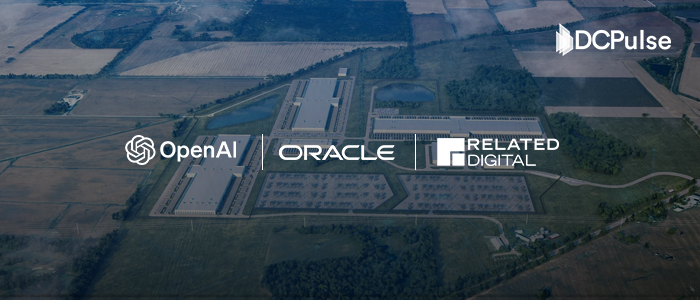London, UK, July 12, 2025- In a landmark ruling with national policy implications, UK Deputy Prime Minister Angela Rayner has approved the development of a 90MW hyperscale data center on Green Belt land in Buckinghamshire, overturning two prior refusals by local planners.
The decision signals a new phase of central government assertiveness in digital infrastructure planning.
The facility, set to rise on the former Woodlands Park landfill site in Iver, had been rejected twice by Buckinghamshire Council, most recently in late 2024.
The council cited air and noise pollution from diesel generators, visual intrusion, biodiversity concerns, and a conflict with Green Belt policy under the National Planning Policy Framework (NPPF).
However, after a formal Section 77 call-in by the Secretary of State, the Planning Inspectorate conducted a public inquiry. It's July 9 recommendation supported the scheme.
Rayner, who also serves as Secretary of State for Levelling Up, Housing and Communities, agreed with the inspectorate, stating that the public benefits outweighed the “limited and mitigable harms.”
Central to the debate is the site’s classification as “grey belt”, unofficial terminology referring to previously developed land within the Green Belt boundary. While technically protected, the site has long been used for landfill and storage.
Rayner emphasized that its industrial past made it “functionally brownfield,” qualifying it for redevelopment under NPPF exceptions.
The 163,000-square-meter project includes nine buildings, a new grid substation, generator farms, transformer arrays, and an on-site battery energy storage system (BESS).
A standout feature is the proposed district heating network to capture and reuse waste heat from the data center, an uncommon measure for hyperscale builds. Rayner cited this as an example of alignment with the UK’s broader decarbonization goals.
“The facility will make a meaningful contribution to the UK’s critical digital infrastructure while also offering innovative community energy benefits,” she wrote in the decision letter. “The development meets a strategic national need and is consistent with our objectives under the National Infrastructure Strategy.”
The context adds urgency to her decision. In February 2024, the UK government officially designated data centers as critical national infrastructure, equating them with utilities, telecoms, and transport networks.
This reclassification followed mounting industry pressure, driven by explosive AI compute growth, data sovereignty concerns, and grid capacity constraints in traditional build zones.
Despite this, local opposition remains strong. Campaigners, including the group Save Iver’s Landscape, criticized the decision as “a betrayal of public trust,” citing generator emissions, ecological disruption, and increased traffic.
Some fear the ruling will open the floodgates for more such developments in peri-urban green spaces.
Industry voices, however, see the ruling as a pivotal shift. With high-density compute demand outpacing local planning capacity and grid-ready land in short supply, national authorities appear more willing to override regional objections when strategic infrastructure is at stake.
The Iver decision is Rayner’s second such override in recent weeks. She previously approved a similar Green Belt development in Abbots Langley, Hertfordshire, against local resistance.
Both moves suggest an emerging Labour government strategy to centralize control over digital infrastructure planning.
Planning law experts note that these cases underscore growing tensions between localism and national infrastructure demands.
While Green Belt protections remain enshrined in law, the NPPF allows for exceptions under “very special circumstances.” Rayner’s justification rests on two core arguments: the urgent need for national-scale computing and the historically industrial character of the land.
As the debate intensifies, the Woodlands Park case may prompt changes in national policy.
An update to the NPPF is expected later this year, and some insiders suggest the term “grey belt” may be formally introduced to guide future planning around brownfield redevelopment within Green Belt zones.
Analysts also expect Rayner’s office to release new guidance covering the integration of district heating, co-location of battery storage, and strategic data center clustering, all elements of the Iver proposal.
Energy analysts warn that new data center hubs must not only address land use but also escalating power requirements.
The UK’s National Grid recently forecast that electricity demand from data centers could quadruple by 2040, raising concerns about localised grid stress and prompting calls for stricter siting coordination and integrated energy planning.
Greystoke’s plan to include on-site BESS and heat reuse is seen as a model for mitigating such impacts.
Meanwhile, planning experts point to similar tensions unfolding elsewhere in Europe.
In Ireland, new data center approvals are subject to moratoriums in parts of Dublin due to grid constraints, while cities like Amsterdam and Frankfurt have imposed stricter permitting rules around energy use, land efficiency, and sustainability compliance.
Construction is scheduled to begin in early 2026, pending final planning approvals. Greystoke, the developer, is reportedly in talks with potential anchor tenants, including hyperscale and AI infrastructure operators.
These tenants are seeking proximity to fiber corridors and substations while avoiding the constraints of central London real estate.
As the UK races to expand its digital backbone in an era defined by AI workloads and net-zero targets, the Woodlands Park ruling could mark a lasting shift, one that reframes the balance between environmental protection and infrastructure expansion for years to come.


.jpg)


.jpg)